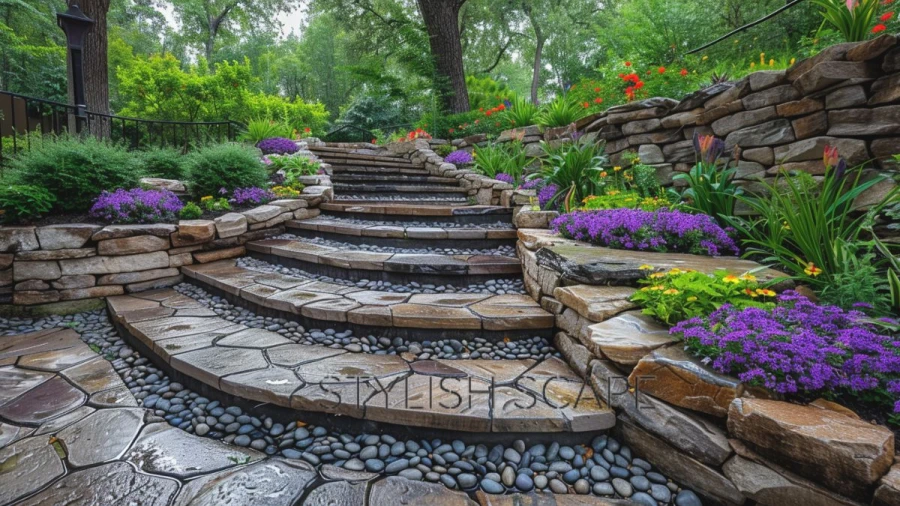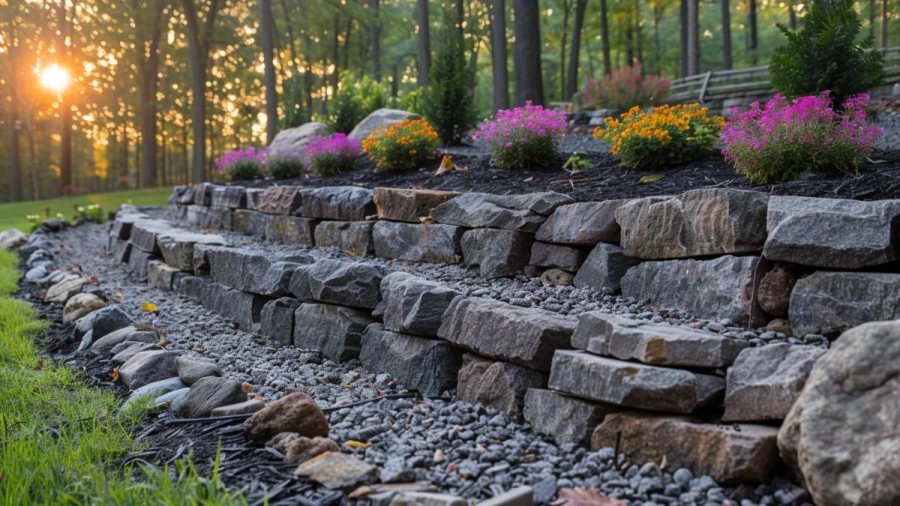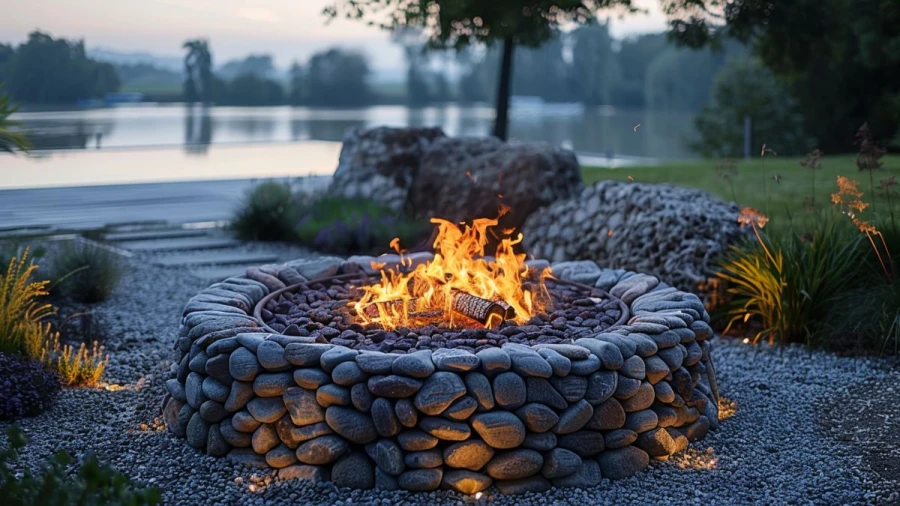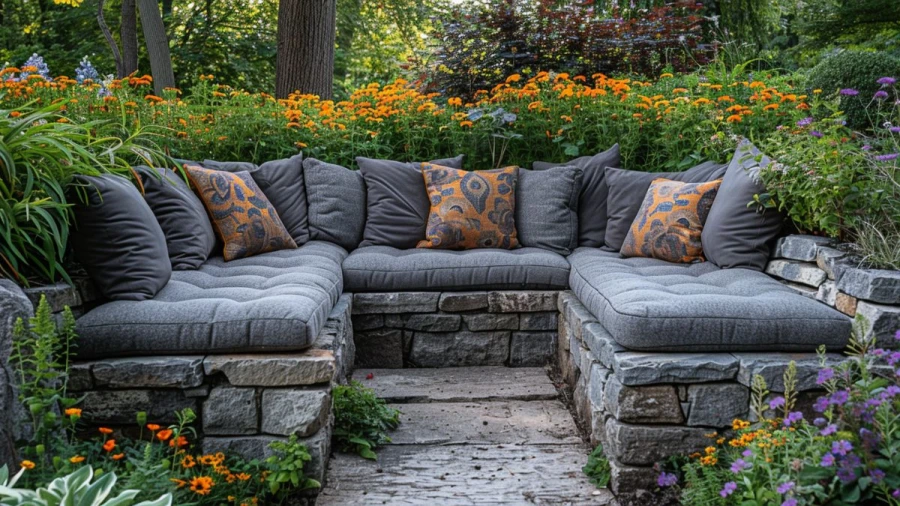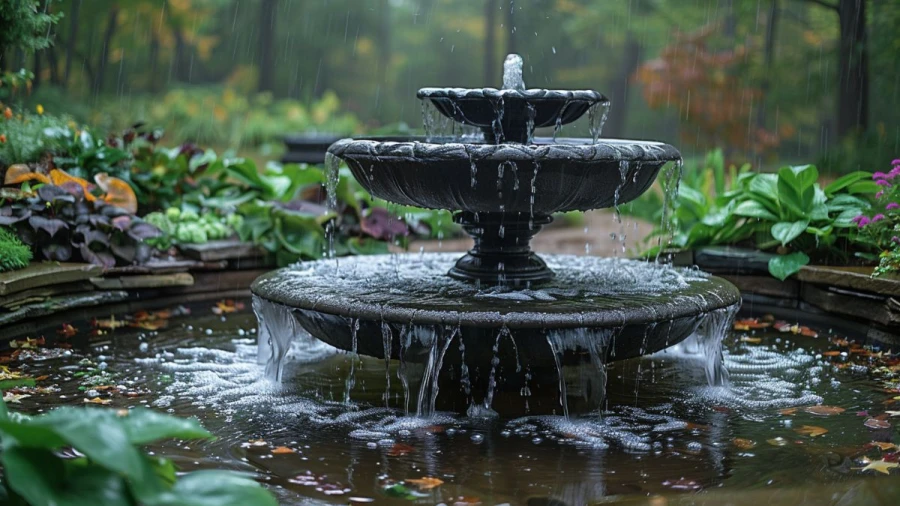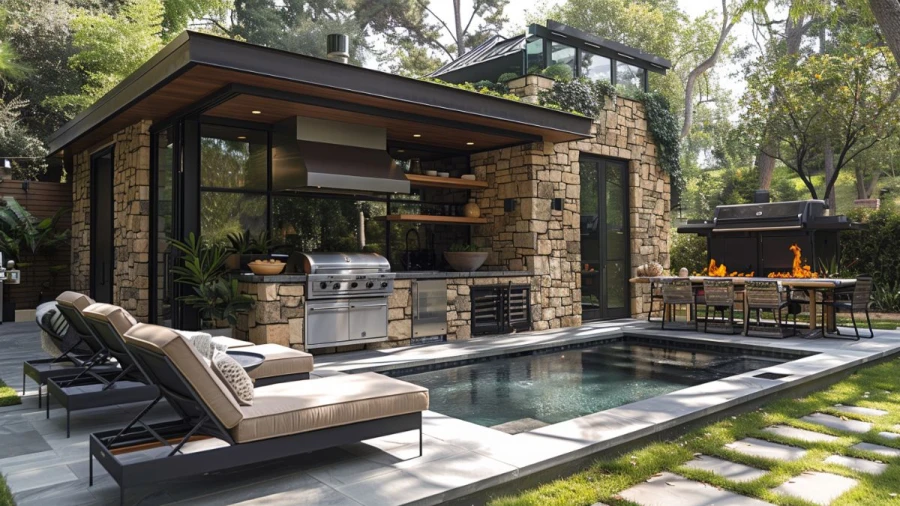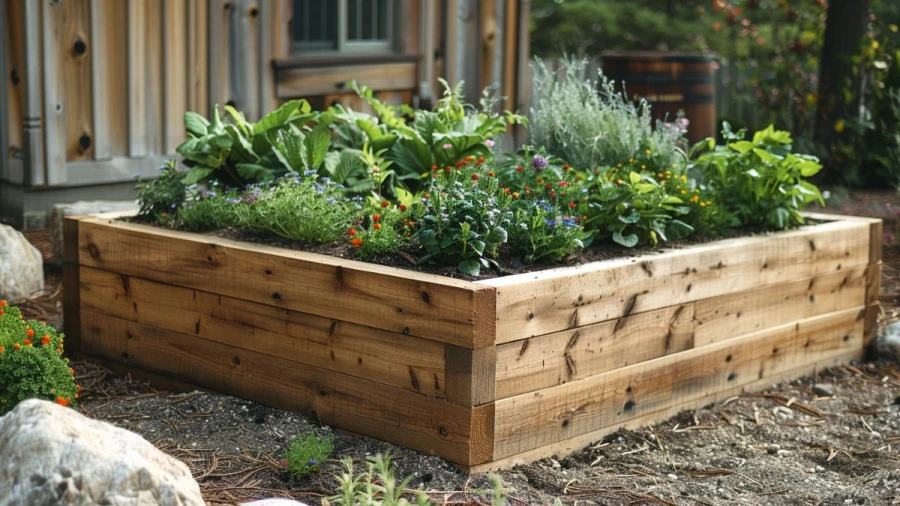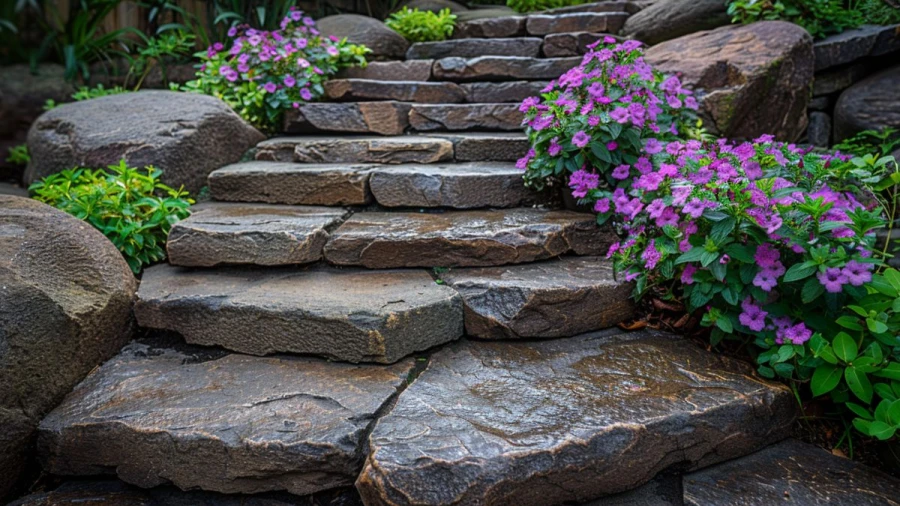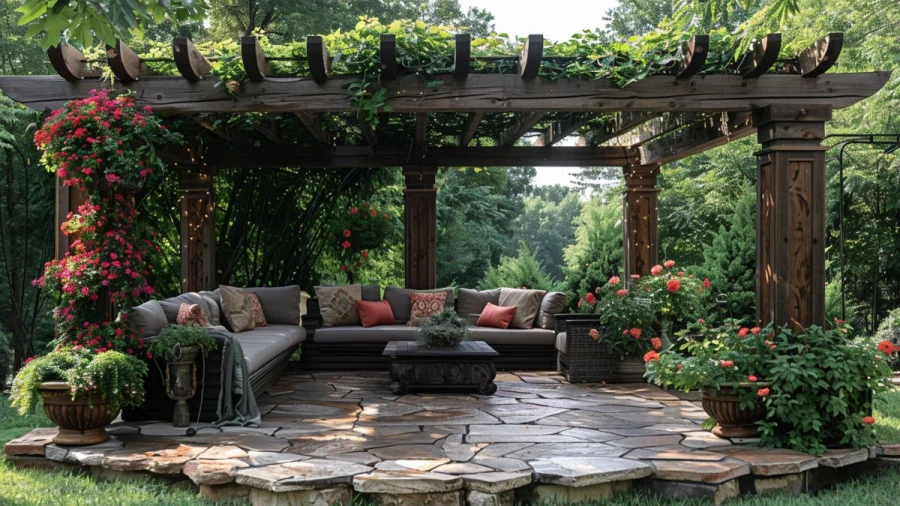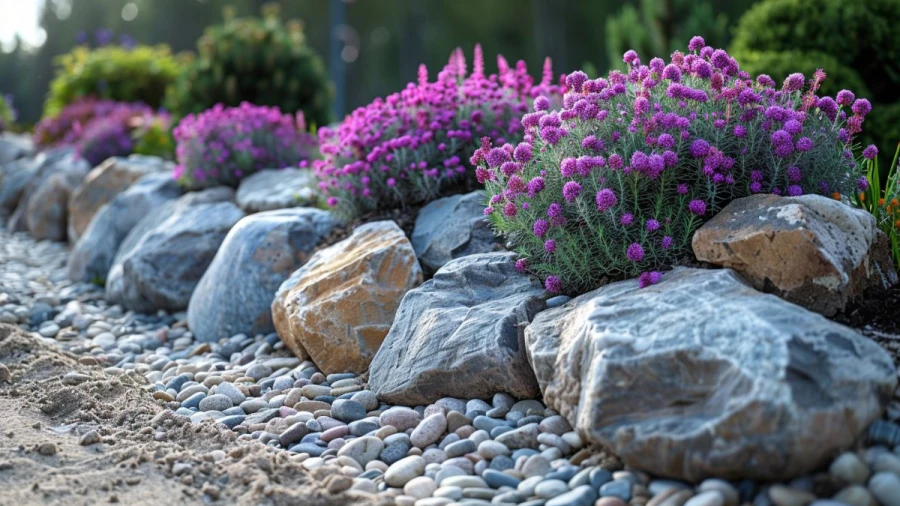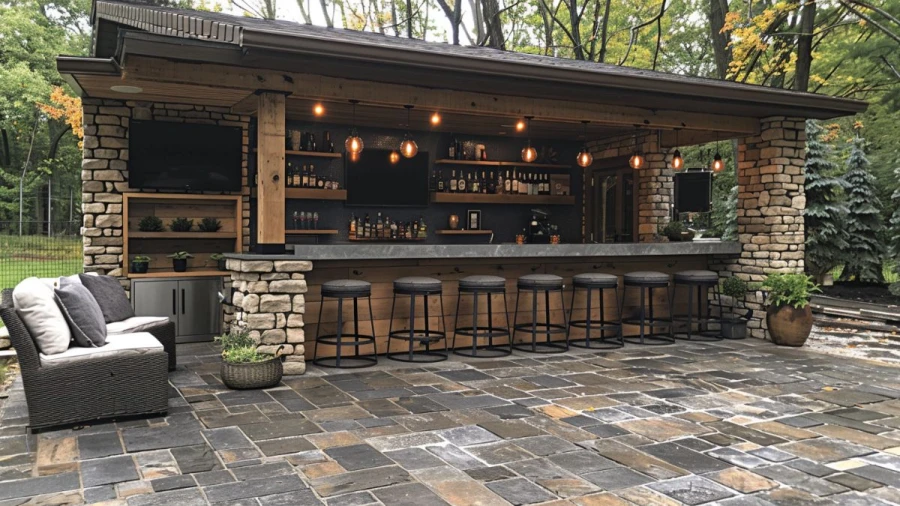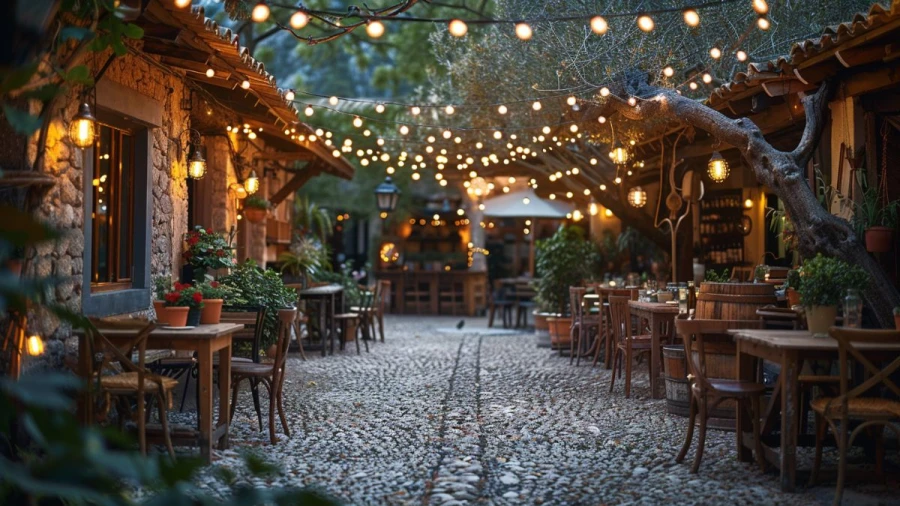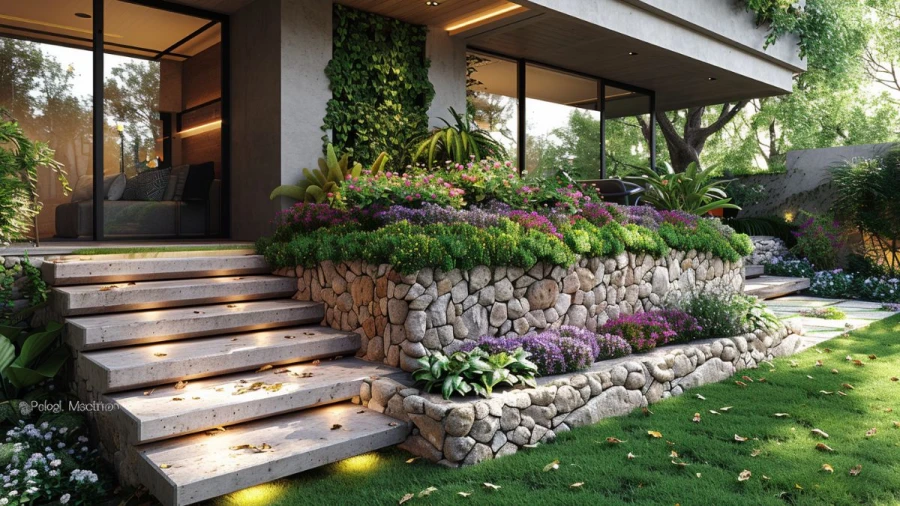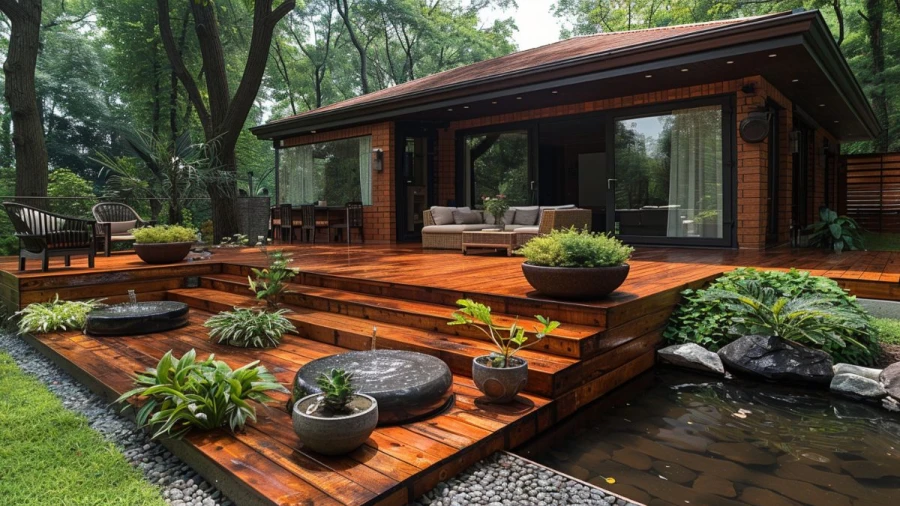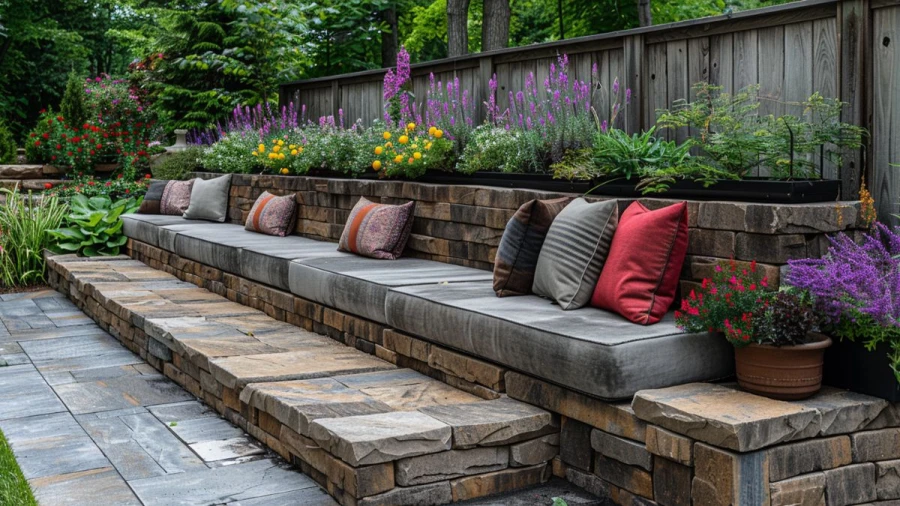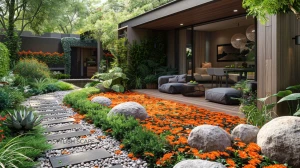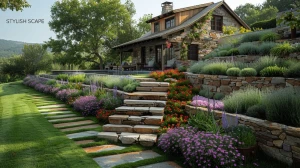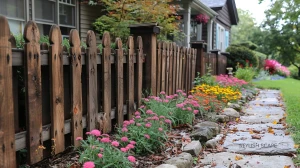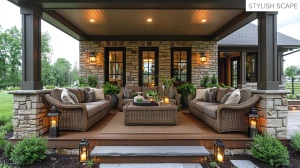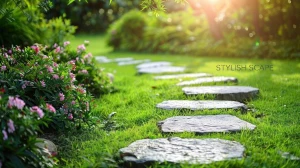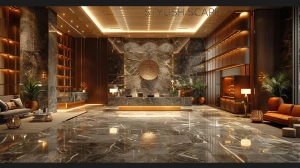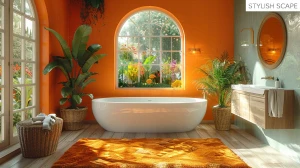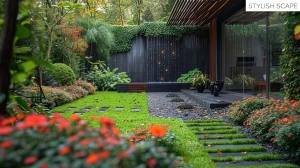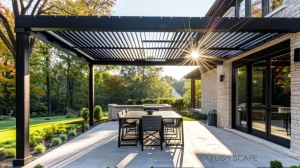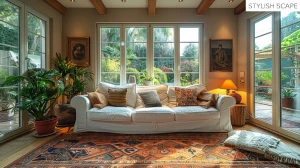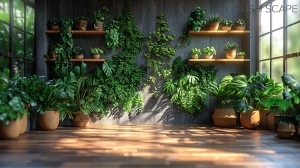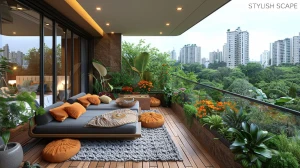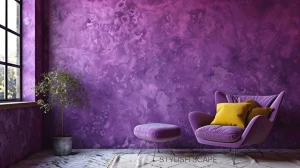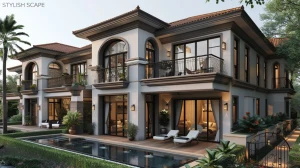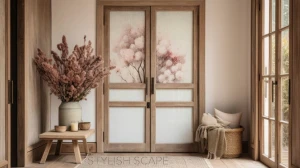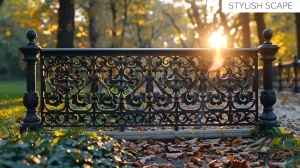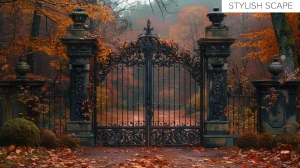
20 Stunning Hardscape Ideas To Transform Your Outdoor Space
Explore 20 beautiful Hardscape Ideas to enhance your outdoor spaces. From elegant patios to eye-catching pathways, find inspiration and tips for creating a beautiful and functional outdoor environment with our top Hardscape Ideas.
by Maivizhi A
Updated Aug 07, 2024
On This Page
- Hardscape Ideas
- Patio Pavers Hardscape
- Retaining Walls Hardscapes
- Hardscape Outdoor Fire Pit
- Stone Walkways
- Hardscape Pergolas
- Built-in Seating Hardscape
- Water Features
- Outdoor Kitchen
- Raised Garden Beds
- Gazebo
- Driveway Pavers
- Outdoor Fireplace Hardscapes
- Stone Steps
- Pergola with Climbing Plants
- Rock Gardens
- Outdoor Bar
- Bistro Lights
- Built-in Planters
- Decking
- Concrete Seating Walls
- How Do You Choose the Right Materials for Your Outdoor Hardscape Design?
Hardscape Ideas
Hardscape refers to the non-plant elements of landscaping that create structure and design in outdoor spaces. This includes things like patios, walkways, retaining walls, decks, and other solid features. Hardscaping is used to define areas, provide functional spaces, and enhance the beauty of a yard or garden.
For example, a patio made of stone or pavers is a hardscape feature that provides a place for outdoor dining or relaxation. A walkway made of bricks or gravel can guide visitors through a garden and connect different areas of your yard. Retaining walls help manage slopes and create terraces, while decorative elements like garden fountains or fire pits can add style and focal points.
When planning hardscape elements, consider how they will fit with your overall landscape design and how they will be used. Choose materials that complement your home’s style and are suitable for your local climate. Proper installation is crucial to ensure durability and functionality. Combining hardscaping with plants can create a balanced and attractive outdoor space that is both practical and visually pleasing.
Patio Pavers Hardscape
Patio pavers are flat stones or tiles used to create a durable and attractive outdoor surface. They come in various shapes, sizes, and materials, like concrete, brick, or natural stone. To install patio pavers, you start by preparing the ground, leveling it, and laying a base of gravel or sand. Then, you arrange the pavers in your desired pattern, leaving small gaps between them.
These gaps are filled with sand to keep the pavers in place. Patio pavers are popular because they provide a stable surface for outdoor activities and come in many styles to match your home's look. They're also easy to maintain and can handle various weather conditions.
Retaining Walls Hardscapes
Retaining walls are structures designed to hold back soil and prevent erosion. They are built on sloped or uneven land to create flat areas for gardening, patios, or other uses. Retaining walls can be made from different materials like concrete blocks, natural stone, or timber. The process involves digging a trench, laying a foundation, and stacking the chosen materials.
Some walls have drainage systems to manage water flow and prevent pressure buildup. Besides their functional benefits, retaining walls can also enhance the visual appeal of your garden or yard by adding depth and definition to the landscape.
Hardscape Outdoor Fire Pit
An outdoor fire pit is a cozy and stylish feature that allows you to enjoy a fire outside, whether for warmth, cooking, or ambiance. Fire pits come in various designs, including portable ones that you can move around and built-in models that are permanently installed. They can be made from materials like stone, metal, or brick.
To set up a fire pit, you need to choose a safe location away from flammable materials, prepare a base, and follow any local safety guidelines. Once installed, you can use your fire pit for roasting marshmallows, having a barbecue, or simply relaxing with family and friends. It adds a charming touch to your outdoor space and extends the usability of your backyard into cooler months.
Stone Walkways
Stone walkways are pathways made from stones laid out in a pattern to create a durable and attractive surface for walking. They can be crafted from various types of stones, such as flagstone, cobblestone, or slate. These paths can wind through gardens, around homes, or across yards, adding both functionality and visual appeal.
Stone walkways are popular because they blend well with natural surroundings and require minimal maintenance. They are sturdy and can withstand heavy foot traffic and weather conditions. By choosing different stone shapes and colors, you can customize the look to fit your garden's style, from rustic to modern. Additionally, these walkways can help to prevent muddy paths during rainy weather, making your outdoor spaces more accessible and clean.
Hardscape Pergolas
Pergolas are outdoor structures with an open roof supported by columns or posts. They are often used to create a shaded area in gardens, patios, or yards. Pergolas can be designed with a variety of materials, including wood, metal, or vinyl, and can be customized in size and shape to fit your space. The open roof usually has a grid or lattice design, allowing for climbing plants like vines or roses to grow and provide additional shade and beauty.
Pergolas offer a stylish and functional way to enhance your outdoor living area, creating a perfect spot for relaxation, dining, or entertaining. They add a touch of elegance and can be decorated with curtains, lights, or furniture to suit your preferences.
Built-in Seating Hardscape
Built-in seating refers to seating arrangements that are integrated into the design of outdoor spaces, such as gardens, patios, or decks. Instead of using separate chairs or benches, built-in seating is constructed as a permanent feature, often using materials like stone, brick, or wood. This type of seating can be designed to fit the shape of your space, such as along the edge of a patio or around a fire pit.
It provides a seamless and stylish solution for seating, saving space and often creating a more cohesive look in your outdoor area. Built-in seating can also be customized with cushions or pillows for added comfort and can be designed to include storage underneath for convenience.
Water Features
Water features add a soothing and visually appealing element to your outdoor space. They include fountains, ponds, or waterfalls that create gentle sounds and movement in the garden. Fountains come in many styles, from classic tiered designs to modern sculptures, and can be a focal point in a yard. Ponds can host fish and aquatic plants, providing a lively and serene atmosphere. Waterfalls can be designed to flow into a pond or a stream, adding a natural touch.
These features not only enhance the beauty of your garden but also attract wildlife like birds and butterflies. They also help mask noise from nearby streets, creating a peaceful retreat. Regular maintenance, such as cleaning and checking the water level, ensures that your water feature remains a healthy and attractive part of your outdoor space.
Outdoor Kitchen
An outdoor kitchen extends your living space into the backyard, allowing you to cook and entertain outside. It usually includes a grill, countertop space, a sink, and sometimes a refrigerator or pizza oven. With an outdoor kitchen, you can prepare meals while enjoying the fresh air and socializing with guests. The design can range from simple setups to elaborate installations with built-in appliances and seating areas.
Materials used for outdoor kitchens, like stainless steel and stone, are chosen for their durability and weather resistance. Adding features like a bar or a dining area enhances the functionality and comfort. An outdoor kitchen makes backyard gatherings more enjoyable and convenient, turning your garden into a versatile space for cooking and entertaining.
Raised Garden Beds
Raised garden beds are garden plots built above ground level, usually enclosed with wooden or metal sides. They offer several advantages, such as improved drainage, better soil quality, and easier access for planting and weeding. By elevating the garden bed, you can create a more comfortable working height, reducing the need to bend over and making gardening less strenuous.
Raised beds warm up faster in the spring, allowing for an earlier start to the growing season. They also help keep pests and weeds at bay, as the enclosed design makes it harder for them to invade. You can fill raised beds with high-quality soil and compost, which helps plants grow better. Overall, raised garden beds are a practical and attractive way to grow vegetables, herbs, and flowers in your garden.
Gazebo
A gazebo is a small, open-sided structure often found in gardens or yards. It usually has a roof and may have latticework or curtains for privacy. Gazebos provide a shaded area where you can sit, relax, and enjoy your outdoor space. They are great for hosting gatherings or simply taking a break from the sun.
You can find gazebos in various shapes and sizes, from simple round ones to more elaborate designs with built-in seating or even a small table. They can be made from wood, metal, or other materials, and they add a touch of elegance to any garden or backyard.
Driveway Pavers
Driveway pavers are individual blocks or tiles used to create a durable and attractive surface for your driveway. They come in various shapes, sizes, and colors, allowing you to design a unique pattern. Pavers are made from materials like concrete, brick, or natural stone and are known for their strength and long-lasting quality.
They can handle heavy vehicle traffic and are relatively easy to repair—if a paver gets damaged, you can replace just that one piece rather than the entire driveway. Pavers also allow rainwater to drain through, which helps reduce puddles and is better for the environment.
Outdoor Fireplace Hardscapes
An outdoor fireplace is a structure designed for burning wood or gas in an outdoor setting. It’s usually built with heat-resistant materials like brick or stone and can be a beautiful focal point in your backyard or patio. Outdoor fireplaces are perfect for staying warm on cool evenings, roasting marshmallows, or just enjoying a cozy fire with friends and family.
They come in various styles, from traditional to modern, and can include features like built-in seating or cooking surfaces. An outdoor fireplace extends the usability of your outdoor space, making it a great addition for entertaining or relaxing.
Stone Steps
Stone steps are a great way to create a beautiful and functional path in your garden. They are made from various types of stone, such as granite or flagstone, and can be arranged in different patterns. Stone steps help you navigate uneven terrain, making it easier to move between different levels of your yard. They are durable and weather-resistant, so they can withstand heavy use and last for many years.
Plus, they add a natural, rustic charm to your outdoor space. To build stone steps, you'll need to plan the layout, dig out the area, and carefully place each stone to ensure stability. Adding plants or ground cover around the steps can enhance their appearance and blend them into your garden.
Pergola with Climbing Plants
A pergola is a lovely structure that adds style and function to your garden. It consists of vertical posts supporting a framework of beams, creating a shaded walkway or seating area. By adding climbing plants like wisteria or roses, you can create a beautiful green canopy that offers extra shade and a burst of color. Pergolas can be made from wood, metal, or vinyl, depending on your preference and budget.
To build a pergola, you'll need to choose the location, set the posts in the ground, and attach the beams. Once the structure is in place, you can train your climbing plants to grow over it, which will not only enhance its appearance but also provide a cozy and inviting space in your garden.
Rock Gardens
Rock gardens are a fantastic way to add texture and visual interest to your landscape. They use a variety of rocks, boulders, and stones arranged in a natural-looking design. These gardens are perfect for areas with poor soil or low water availability because they require minimal maintenance and are drought-resistant. You can place smaller rocks around larger ones and fill gaps with gravel or sand.
Adding hardy plants like succulents, alpine plants, or ground covers can complete the look and bring a touch of greenery to your rock garden. When creating a rock garden, start by planning the layout, selecting rocks of different sizes and shapes, and arranging them to mimic natural formations. This type of garden provides a unique, low-maintenance alternative to traditional flower beds.
Outdoor Bar
An outdoor bar is a fantastic addition to your backyard or patio, turning your space into a fun and social area. Imagine a stylish bar setup where you can serve drinks and snacks while enjoying the outdoors. You can create this by adding a counter, bar stools, and some shelves for drinks and glasses. Depending on your space and budget, you can choose from different styles, like a simple DIY bar or a more elaborate setup with a built-in grill or sink.
Adding a bar to your outdoor area makes it perfect for entertaining guests, hosting summer parties, or just relaxing with family. You can enhance the bar with some comfortable seating and maybe even an outdoor fridge or wine cooler for convenience. It’s all about creating a space where you can enjoy the outdoors while having everything you need right at your fingertips.
Bistro Lights
Bistro lights, also known as string lights, are a charming way to add ambiance to your outdoor space. These lights are typically strung across patios, gardens, or pergolas, creating a warm and inviting atmosphere. They come in various styles, such as globe, Edison, or fairy lights, and can be hung in different patterns to match your décor. Bistro lights are perfect for evening gatherings, adding a soft, magical glow that makes your outdoor area feel cozy and special.
They are also relatively easy to install and can be used year-round. Whether you’re hosting a party or just relaxing outside, bistro lights can transform your space into a delightful retreat. Their versatility and charm make them a popular choice for enhancing outdoor living areas.
Built-in Planters
Built-in planters are a great way to integrate greenery into your outdoor space while saving room. These planters are built into structures like walls, benches, or even steps, making them a functional and stylish addition. By incorporating planters directly into your design, you create a seamless look that combines form and function. You can use them to grow flowers, herbs, or small shrubs, adding color and life to your patio or garden.
Built-in planters are particularly useful in smaller areas where traditional pots might take up too much space. They also help with maintenance, as they can be easier to access and water. Whether you’re looking to add a touch of nature or create a more organized garden space, built-in planters offer a practical and attractive solution.
Decking
Decking involves creating a flat surface, often outdoors, made from materials like wood, composite, or plastic. It's commonly used to build patios or elevated platforms, providing a stylish and functional area for outdoor activities. Decking can be customized to fit the size and shape of your space, and it can be designed to blend with your home’s style.
Wood decking, like cedar or redwood, offers a classic, natural look, while composite materials are low-maintenance and resistant to weathering. Decking can be enhanced with features like built-in seating, lighting, or railings to create a comfortable and visually appealing outdoor space. Proper installation and maintenance are important to ensure durability and safety.
Concrete Seating Walls
Concrete seating walls are durable and functional structures often used in gardens or patios. They serve as both seating and a boundary, adding a modern, sleek look to outdoor spaces. These walls are made from poured concrete and can be customized in shape, size, and finish. They are designed to withstand weather conditions and provide long-lasting use.
Concrete seating walls can be built around a fire pit, along pathways, or as part of a garden bed, offering a practical seating option while defining the space. Adding cushions or decorative elements can enhance comfort and style. They are a great choice for creating defined seating areas and can be integrated with other landscaping features for a cohesive look.
How Do You Choose the Right Materials for Your Outdoor Hardscape Design?
Choosing the right materials for your outdoor hardscape design involves considering several factors to ensure both functionality and aesthetics. Here’s a step-by-step guide to help you make the best choices:
Assess Your Needs
Purpose: Determine the primary function of the hardscape (e.g., patio, walkway, retaining wall).
Traffic: Consider the amount of foot or vehicle traffic the area will experience.
Consider Climate and Weather
Durability: Choose materials that can withstand local weather conditions, such as freeze-thaw cycles or heavy rainfall.
Maintenance: Some materials require more maintenance than others, so consider how much upkeep you’re willing to do.
Match Style and Aesthetics
Design Harmony: Ensure that the materials complement your home’s architecture and the overall landscape design.
Color and Texture: Choose colors and textures that blend well with your existing outdoor space and personal style.
Evaluate Material Options
Concrete: Versatile and durable; can be stamped or stained for different looks.
Pavers: Available in various shapes, sizes, and colors; offer flexibility in design and are easy to replace if damaged.
Natural Stone: Offers a high-end look with durability; includes options like granite, limestone, and slate.
Brick: Provides a classic, timeless appearance; durable but may require more maintenance.
Wood: Ideal for rustic or natural designs; requires regular maintenance and treatment to withstand the elements.
Consider Budget
Cost: Research the cost of materials and installation. Some materials may be more expensive upfront but offer longer-term value.
Installation: Factor in whether you’ll be DIY-ing or hiring professionals, as this can impact overall costs.
Think About Longevity and Sustainability
Lifespan: Choose materials known for their longevity to avoid frequent replacements.
Eco-Friendly Options: Look for sustainable materials or those with a lower environmental impact if this is important to you.
Check Local Regulations
Permits: Some projects may require permits or have regulations regarding materials and design, so check with local authorities.
By carefully considering these factors, you can select materials that will enhance your outdoor space’s beauty and functionality while aligning with your practical needs and budget.
